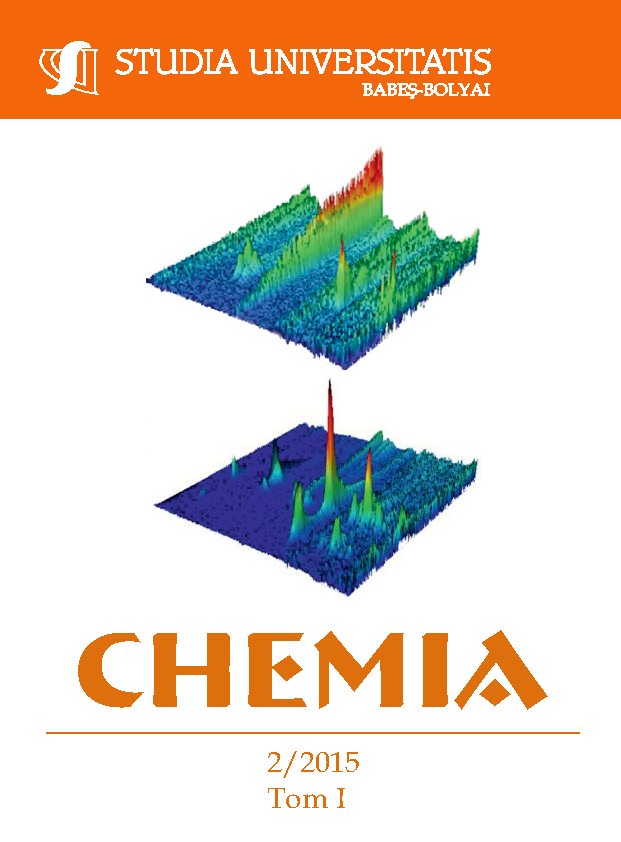COIR EMPLOYED AS SOILLESS CULTIVATION SUBSTRATE AND ITS INTERFERENCE WITH NUTRIENT SOLUTION DURING TWO TOMATOES CROPPING PERIODES (CASE STUDY)
Keywords:
soilless cultivation, nutrient solution, coir substrate, tomatoAbstract
The experiment was conducted in the glasshouse of TEI of Thessalia, for two growing periods, in soilless tomato cultivation, with coir substrate (open system). The electrical conductivity of the inflow solution to crops, fluctuated from 1.80 to 2.55 dS m-1 and pH values ranged from 5.5 to 6.8, while for the efflux solution from the crops, ranged from 2.00 to 3.50 dS m-1 for electrical conductivity, and from 5.5 to 6.9 for pH. On the coir substrate, the electrical conductivity ranged from 0.3 to 1.13 dS m-1 (water extract of 1 part of coir: 5 parts of H2O) and for pH from 5.87 to 6.83 during the first crop period; during the second cultivation, the electrical conductivity it fluctuated from 0.65 to 1.91 dS m-1 and for pH from 5.7 to 6.7. According to this study, 20% of substrate was decomposed, CEC increased, also the salinity status of the coir increased essentially during the second cultivation period, correlated with nitrate and phosphate forms enrichment of the substrate, while a slight negative affection to the crop production was observed; in generally, the coir substrate, is a good choice with excellent results for cultivation return.
References
Gül A., Tüzel I.H., Tuncay Ö., Eltez R.Z. & Zencirkiran E., International Symposium Greenhouse Management for Better Yield & Quality in Mild Winter Climates, 1997, 491, pp. 389-394.
Dasgan H.Y. & Ekici B., In International Symposium on Soilless Culture and Hydroponics, 2004, 697, pp. 399-408.
Manios, V.I., Papadimitriou, M.D. and Kefakis, M.D., Acta Hort. (ISHS), 1995, 408, 11.
Inden, H. and Torres, A., Acta Hort. (ISHS), 2004, 644, 205.
Azad, A.K., Ishikawa, K., Diaz-Perez, J.C., Eaton, T.E.J. & Takeda, N., Agricultural Sciences, 2013, 4(07), 1.
Buwalda, F., van Os, E.A., Giacomelli, G., Samperio Ruiz, G., Vermeulen, T., van Weel, P.A. & Ruijs, M.N.A., International Symposium on Growing Media and Soilless Cultivation, 2013, 1034, pp. 201-207.
Rius-Ruiz, F.X., Andrade, F.J., Riu, J. & Rius, F.X., Food chemistry, 2014, 147, 92-97.
Sonneveld, C., Baas, R., Nijssen, H.M.C. and De Hoog, J., Journal of Plant Nutrition, 1999, 22(6): 1033.
Zekki, H., Gauthier, L. & Gosselin, A. Journal of the American Society for Horticultural Science, 1996, 121(6), 1082.
Bugbee, B., Acta Horticulture, 2004, 648, 99.
Bissonnette, W.M., Wainwright, R.E., Payne, C., Thompson, J., Bromley, R. and Morgan, C., U.S. Patent No. 8,261,486. Washington, DC: U.S. Patent and Trademark Office, 2012.
Domingues, D.S., Takahashi, H.W., Camara, C.A. & Nixdorf, S.L., Computers and Electronics in Agriculture, 2012, 84, 53.
Furlani A.M.C., de Abreu M.F., de Abreu C.A., Furlani P.R. & Bataglia O.C., International Symposium on Soilless Culture and Hydroponics, 2004, 697, pp. 109-115.
Martínez-Cárdenas, L., Reed, D., Kent, M., Ramírez-Vallejo, P., Juárez-López, P., Cruz-Crespo, E., Bugarín-Montoya, R. and García-Paredes, J.D., International Symposium on Growing Media and Soilless Cultivation, 2013, 1034, pp. 501-504.
Hesse, P.R., A Textbook of Soil Chemical Analysis. John Murray, London, 1972.
Page, A.L., Miller, R.H. and Keeney, D.R., “Methods of Soil Analysis Part 2: Chemical and Microbiological Properties. Agronomy, ASA and SSSA”, Madison, Wisconsin, USA, 1982.
Allen, S.E., Grimshaw, H.M., Parkinson, J.A. and Quarmby, C., “Chemical analysis of Ecological materials”, Blackwell Scientific Publications, 1974.
Varian, M., “Flama Atomic Absorption Spectroscopy. Analytical Methods”, Varian Australia, 1989, Publ. N0: 85-100009-00.
Ryan, B.F., Joiner, B.L. and Cryer, J.D., “MINITAB Handbook: Updated for release 14”, 2005, 5th edition.
Downloads
Published
How to Cite
Issue
Section
License
Copyright (c) 2015 Studia Universitatis Babeș-Bolyai Chemia

This work is licensed under a Creative Commons Attribution-NonCommercial-NoDerivatives 4.0 International License.



